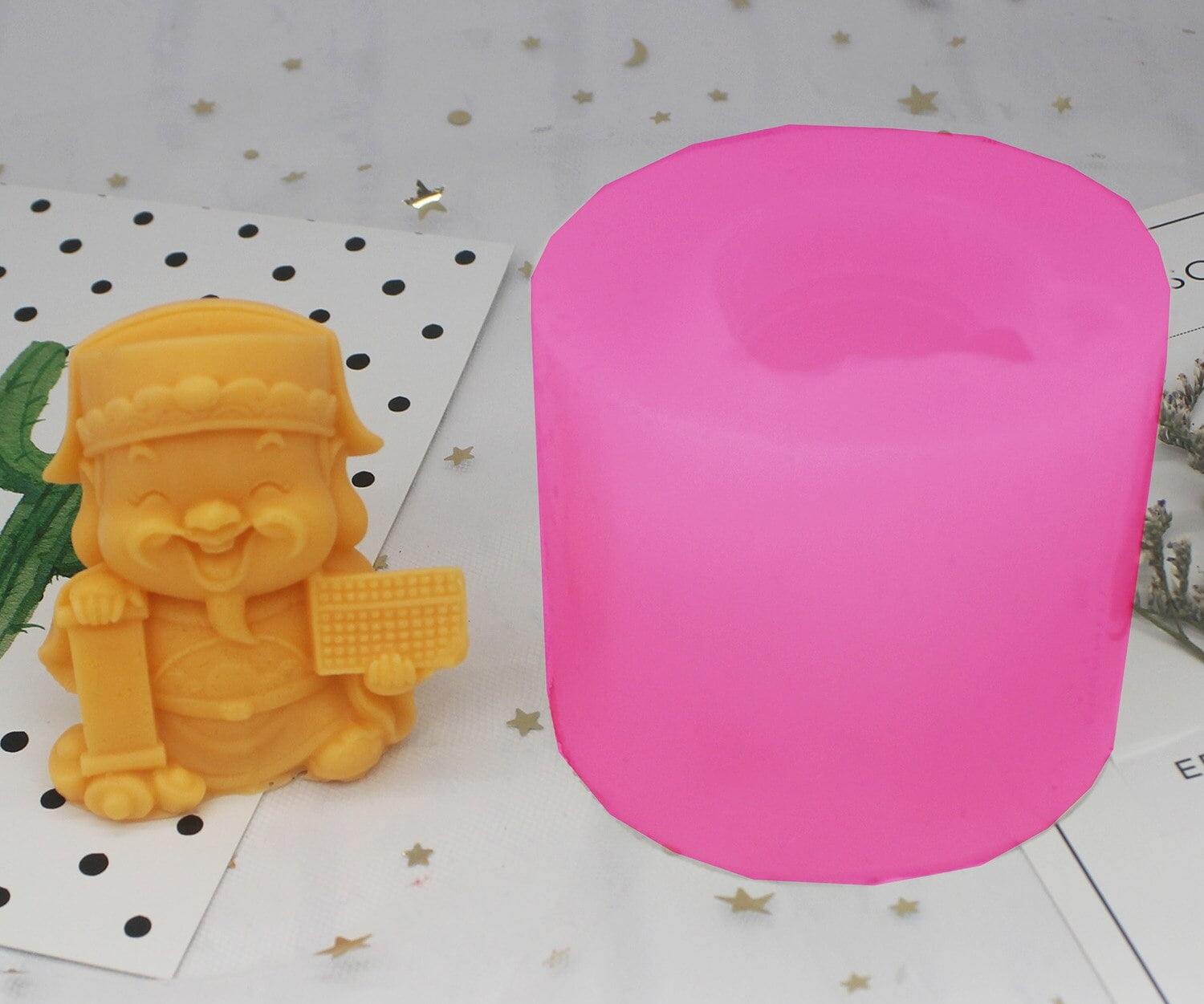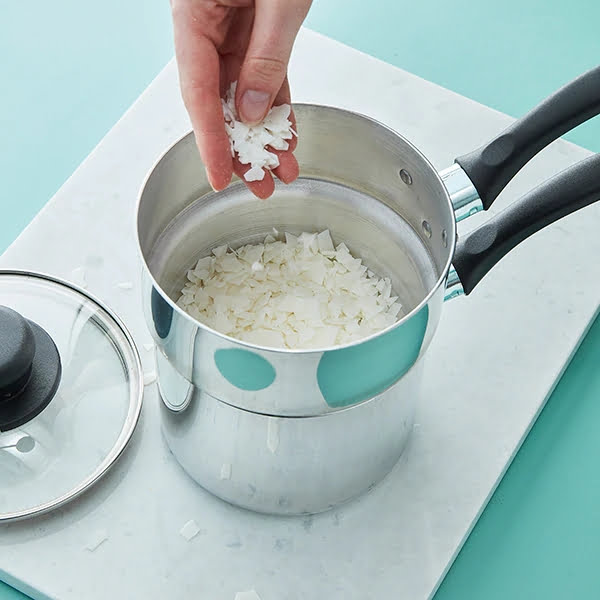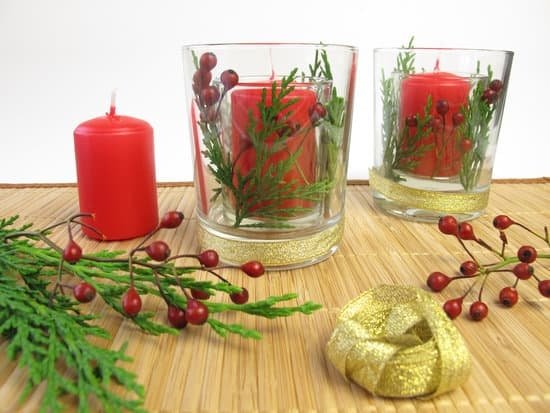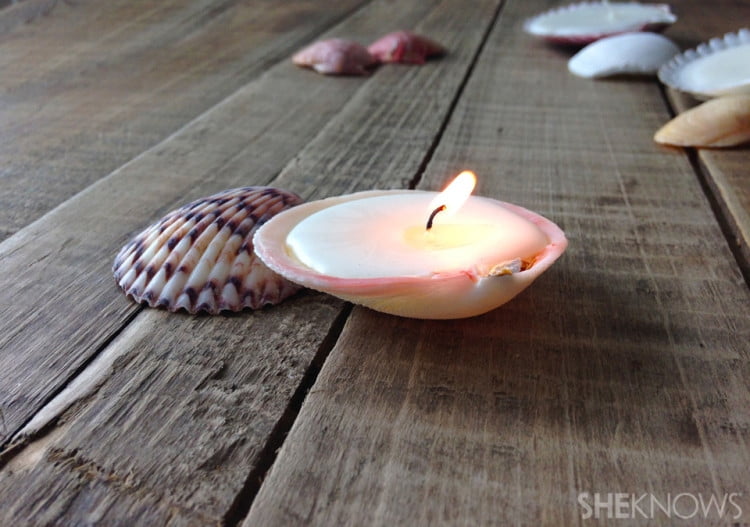When it comes to creating the perfect ambiance and enhancing the sensory experience of candles, choosing the right fragrance oil for candle making is essential. Fragrance oils play a crucial role in determining the overall scent profile of candles, allowing crafters to personalize their creations with a wide range of aromas. Whether you’re looking to create a relaxing atmosphere with lavender or evoke warm memories with vanilla, selecting the ideal fragrance oil is key to achieving your desired results.
With a multitude of options available, ranging from floral and fruity scents to herbal and seasonal blends, there is a fragrance oil for every preference and occasion. The type of fragrance oil chosen can significantly impact the overall mood and appeal of the candle, making it important to consider factors such as candle type, wax type, and personal preferences when making your selection.
By understanding these variables, you can create candles that not only smell delightful but also cater to specific needs or themes.
From popular scents like vanilla, lavender, and cinnamon to unique blends that cater to individual tastes, there are endless possibilities when it comes to fragrance oils for candle making. By exploring different fragrances and experimenting with various combinations, crafters can unleash their creativity and develop signature scents that stand out from commercial options.
Additionally, utilizing proper techniques such as accurate measurement and effective mixing methods can ensure that the fragrance oils are incorporated seamlessly into the candles for optimal scent dispersion.
Types of Fragrance Oils
When it comes to candle making, choosing the right fragrance oil is essential in creating a captivating scent experience. Fragrance oils come in various categories, each offering a unique aroma profile that can enhance the ambiance of any space. Here are some of the different types of fragrance oils you can explore for your candle making projects:
- Floral fragrances: Floral scents like rose, jasmine, and lavender add a touch of elegance and sweetness to candles. They are perfect for creating a romantic atmosphere or bringing a sense of tranquility to any room.
- Fruity fragrances: If you prefer refreshing and vibrant scents, fruity fragrance oils like apple, citrus, and mango are excellent choices. These lively aromas can energize your space and uplift your mood.
- Herbal fragrances: Herbal scents such as eucalyptus, peppermint, and lemongrass offer a natural and invigorating aroma. These fragrances are ideal for promoting relaxation and clearing the mind.
- Seasonal scents: Seasonal fragrance oils like pumpkin spice, cranberry, and pine bring the essence of different times of the year into your home. Whether it’s fall harvest or winter holiday vibes you’re after, seasonal scents can evoke nostalgia and warmth.
Incorporating a variety of fragrance oil categories into your candle making repertoire allows you to cater to different preferences and occasions. By experimenting with different scent combinations within each category, you can create signature candles that resonate with your personal style or brand identity. Whether you’re crafting candles for yourself or as gifts for others, the versatility of fragrance oils offers endless possibilities for customization.
When selecting fragrance oils for your candle making projects, consider factors such as the type of candle you’re making (e.g. soy wax candles or paraffin wax candles), the intensity of scent throw desired, and your own olfactory preferences.
By understanding how different fragrance oil categories interact with various waxes and candle types, you can achieve optimal results in terms of both scent performance and aesthetic appeal. Remember to follow recommended guidelines for safe usage of fragrance oils to ensure an enjoyable and hassle-free candle making experience.
How to Choose the Right Fragrance Oil
When it comes to creating the perfect scented candles, choosing the right fragrance oil is essential. The fragrance oil for candle making plays a crucial role in determining the final scent of your candle and how well it performs when lit. There are several factors to consider when selecting the ideal fragrance oil for your candles, including the type of candle you are making, the type of wax you are using, and your personal preference.
First and foremost, the type of candle you are making will influence your choice of fragrance oil. For example, if you are creating soy candles, you’ll want to choose a fragrance oil that is specifically formulated for use with soy wax. Similarly, if you are making paraffin candles, look for fragrance oils that work well with this type of wax. Different types of candles may require different concentrations or types of fragrances to achieve the best results.
Another important factor to consider when choosing fragrance oil for candle making is your personal preference. Think about the scents that you enjoy and would like to have in your living space. Whether you prefer floral, fruity, herbal, or seasonal scents, there is a wide range of fragrance oils available to suit every taste. Experimenting with different fragrances can help you discover new favorites and create unique blends that reflect your personality and style.
In addition to considering the candle type and personal preference, it’s also essential to take into account the quality of the fragrance oil you choose. Opt for high-quality oils that are specifically designed for candle making to ensure a strong and long-lasting scent throw. Testing different fragrances in small batches before committing to a large production can help you determine which ones work best with your candles and bring your vision to life effectively.
| Factors to Consider | Importance |
|---|---|
| Candle Type | Determines compatibility with specific waxes |
| Personal Preference | Reflects individual taste and style |
| Fragrance Oil Quality | Affects scent throw and longevity |
Top Fragrance Oils for Candle Making
When it comes to candle making, selecting the right fragrance oil is crucial in creating a captivating and inviting ambiance. The fragrance oil not only determines the scent of the candle but also plays a significant role in enhancing the overall experience for individuals.
Among the wide array of fragrance oils available, some popular scents stand out for their versatility and appeal. Vanilla, lavender, and cinnamon are among the top fragrance oils for candle making due to their unique characteristics and widespread popularity.
Vanilla fragrance oil is a classic choice that exudes warmth and comfort. Its sweet and creamy aroma is often associated with feelings of relaxation and coziness, making it a favorite among many candle enthusiasts. Whether used on its own or blended with other scents, vanilla adds a touch of sweetness to any space, making it perfect for creating a soothing atmosphere at home or during self-care routines.
Lavender fragrance oil is another beloved option for candles, known for its calming and floral scent. Lavender has long been appreciated for its relaxing properties and ability to promote restful sleep. When used in candles, lavender fragrance oil can help reduce stress levels and create a serene environment for unwinding after a long day. Its fresh and herbaceous aroma makes it a versatile choice that blends well with various other scents to create custom fragrances tailored to individual preferences.
Cinnamon fragrance oil is a popular choice for those seeking warm and spicy notes in their candles. The rich and inviting scent of cinnamon adds depth and complexity to any blend, making it ideal for creating cozy and inviting atmospheres during colder months or festive occasions.
Cinnamon’s aromatic qualities evoke feelings of comfort and nostalgia, making it an excellent option for adding a touch of warmth to any space. Experimenting with different combinations of vanilla, lavender, and cinnamon fragrance oils can lead to unique candle creations that cater to diverse preferences and occasions.
Tips for Using Fragrance Oils
Fragrance oils play a crucial role in candle making, as they are responsible for the delightful scents that fill our homes. When it comes to using fragrance oils for candle making, it is essential to pay attention to proper measurement, mixing techniques, and testing methods to ensure the best results. Here are some tips to help you make the most out of your fragrance oils:
- Proper Measurement: One of the key aspects of using fragrance oils in candle making is measuring them accurately. Too much or too little fragrance oil can affect the final scent throw of your candles. It is recommended to use a digital scale to measure fragrance oils by weight for precision.
- Mixing Techniques: When adding fragrance oil to your candle wax, make sure to incorporate it thoroughly for an even distribution of scent. Stir the fragrance oil into the melted wax at the recommended temperature and continue stirring for a few minutes to ensure proper blending.
- Testing Methods: Before pouring your candles, always conduct a test burn to evaluate the strength and throw of the scent. This will help you determine if you need to adjust the amount of fragrance oil used in your candles for optimal fragrance performance.
By following these tips for using fragrance oils in candle making, you can create beautifully scented candles that enhance any space with delightful aromas. Remember that experimentation is key when it comes to finding the perfect balance of fragrance oil for your candles. Enjoy the creative process and have fun exploring different scents and combinations.
Benefits of Using Fragrance Oils in Candles
Fragrance oils play a significant role in candle making beyond just adding scent to the wax. The benefits of using fragrance oils in candles go far beyond simply creating a pleasant aroma. Aromatherapy, mood enhancement, and gift-giving are just a few reasons why incorporating fragrance oils into your candle making process can elevate the experience for both the maker and the recipient.
Aromatherapy Benefits
One of the most notable benefits of using fragrance oils in candles is their ability to promote aromatherapy. Different scents have been known to have various effects on mood and emotions. For example, lavender is often used for its calming properties, while citrus scents like lemon or orange can help uplift spirits. By carefully selecting fragrance oils with specific properties, you can create candles that not only smell great but also contribute to a positive atmosphere in your space.
Mood Enhancement
The right fragrance oil can also enhance the overall mood or ambiance of a room. Whether you’re looking to create a relaxing environment for an at-home spa day or wanting to add warmth and coziness during the colder months, choosing the appropriate scent can make all the difference. Scents like cinnamon or vanilla can evoke feelings of comfort and nostalgia, while floral fragrances like rose or jasmine can bring a touch of elegance and tranquility to any setting.
Gift-Giving
Candles infused with fragrance oils make thoughtful gifts for any occasion. Whether it’s a birthday, holiday, housewarming, or just because, a hand-poured candle with a personalized scent can show your loved ones how much you care.
You can tailor the fragrance to match their preferences or choose a scent that reminds you of special moments shared together. The gift of a beautifully scented candle allows recipients to enjoy not only the visual beauty but also the aromatic experience it offers.
Fragrance Oil Safety
Fragrance oils are an essential component in candle making, adding pleasant scents that enhance the ambiance of any space. However, it is crucial to handle and store these oils properly to avoid skin irritation or allergic reactions. Whether you are a beginner or experienced candle maker, following proper safety precautions is key to enjoying the benefits of fragrance oils without any adverse effects.
One important aspect of fragrance oil safety is proper handling. When working with fragrance oils for candle making, always use gloves to protect your skin from direct contact with the concentrated oils. Additionally, ensure good ventilation in your workspace to prevent inhaling excessive fumes. It’s also recommended to wear protective eyewear and clothing to avoid accidental spills or splashes.
In terms of storage, fragrance oils should be kept in a cool, dark place away from direct sunlight and heat sources. UV rays and high temperatures can degrade the quality of the oils, affecting both their scent and performance in candles. Make sure to seal the containers tightly after each use to prevent evaporation and preserve the fragrance potency. By taking these storage precautions, you can prolong the shelf life of your fragrance oils for candle making.
| Proper Handling | Storage |
|---|---|
| Always use gloves when handling fragrance oil for candle making. | Keep fragrance oils away from direct sunlight and heat sources. |
| Ensure good ventilation in your workspace. | Seal containers tightly after each use to prevent evaporation. |
| Wear protective eyewear and clothing to avoid spills or splashes. | Store fragrances in a cool, dark place to maintain potency. |
DIY Fragrance Oil Blends
Creating your own unique fragrance oil blends can elevate your candle making to a whole new level. By mixing different fragrance oils together, you can customize the scent of your candles to perfectly match your preferences or create one-of-a-kind blends that will set your creations apart from the rest. Here are some tips and ideas to help you unleash your creativity in blending fragrance oils for candle making.
Choosing Complementary Scents
When creating DIY fragrance oil blends, it’s important to choose scents that complement each other well. Consider combining floral and fruity notes for a fresh and vibrant aroma or mix herbal and spicy scents for a warm and inviting fragrance. Experiment with different combinations to find the perfect balance that appeals to your senses.
Layering Fragrances
One strategy for blending fragrance oils is layering different scents to create depth and complexity in your candles. Start by adding a base note like vanilla or sandalwood, followed by a middle note such as lavender or rose, and finish with a top note like citrus or mint. This layering technique will result in a harmonious blend that evolves as the candle burns.
Keeping Notes
As you experiment with creating DIY fragrance oil blends, be sure to take detailed notes of each combination you try. Keep track of the ratios of each oil used, the process of blending them together, and the resulting scent profile. This record-keeping will not only help you replicate successful blends in the future but also allow you to refine your skills in scent composition over time.
By exploring different combinations of fragrance oils, you can tap into endless possibilities for creating truly unique scents that reflect your personal style and creativity. Whether you’re looking to craft signature candles for yourself or searching for the perfect gift idea, experimenting with DIY fragrance oil blends adds an exciting dimension to your candle making journey. So don’t be afraid to mix, match, and discover new aromatic experiences through the art of blending fragrances for candle making.
Conclusion
In conclusion, fragrance oils play a crucial role in candle making, enhancing the overall experience by adding delightful scents to the ambiance of any space. The types of fragrance oils available offer a wide range of options, from floral and fruity to herbal and seasonal scents, allowing crafters to personalize their creations according to their preferences.
Choosing the right fragrance oil involves considering factors such as the type of candle, wax used, and individual taste, ensuring that the final product fulfills one’s desires.
Experimenting with different fragrance oils opens up a world of possibilities for creating unique and personalized candles. Popular scents like vanilla, lavender, and cinnamon are just the beginning; blending various oils together can result in truly one-of-a-kind fragrances that can be tailored for specific occasions or moods. Proper usage of these oils is essential – from accurate measurement and mixing techniques to thorough testing methods – to achieve optimal results in candle making.
Not only do fragrance oils add sensory pleasure to candles, but they also provide additional benefits like aromatherapy for relaxation or mood enhancement. Furthermore, scented candles make thoughtful gifts for loved ones on special occasions or simply as a gesture of appreciation.
It is important to remember safety precautions when working with fragrance oils in order to prevent skin irritation or allergic reactions. Overall, incorporating quality fragrance oils into candle making elevates the crafting experience and allows for endless creativity in producing fragrant masterpieces that bring warmth and comfort to any environment.
Frequently Asked Questions
What Is the Best Fragrance Oil for Candle Making?
The best fragrance oil for candle making depends on personal preference and the desired scent profile. Some popular options include vanilla, lavender, citrus, and fresh linen. It is important to choose high-quality fragrance oils that are specifically formulated for candles.
Can You Use Fragrance Oils in Candle Making?
Fragrance oils are commonly used in candle making to add pleasant scents to the final product. They are synthetic oils that are designed to disperse fragrance effectively when the candle is burned. Make sure to follow guidelines and use fragrance oils that are safe for candles.
Is It Better to Use Fragrance Oil or Essential Oil for Candle Making?
The choice between using fragrance oil or essential oil for candle making ultimately comes down to personal preference and the desired outcome. Fragrance oils offer a wide range of scents and are often more affordable than essential oils.
However, some prefer the natural aromas of essential oils despite their higher cost. Consider factors such as purity, cost, availability, and strength of scent when deciding between the two options.

Welcome to my candle making blog! In this blog, I will be sharing my tips and tricks for making candles. I will also be sharing some of my favorite recipes.





